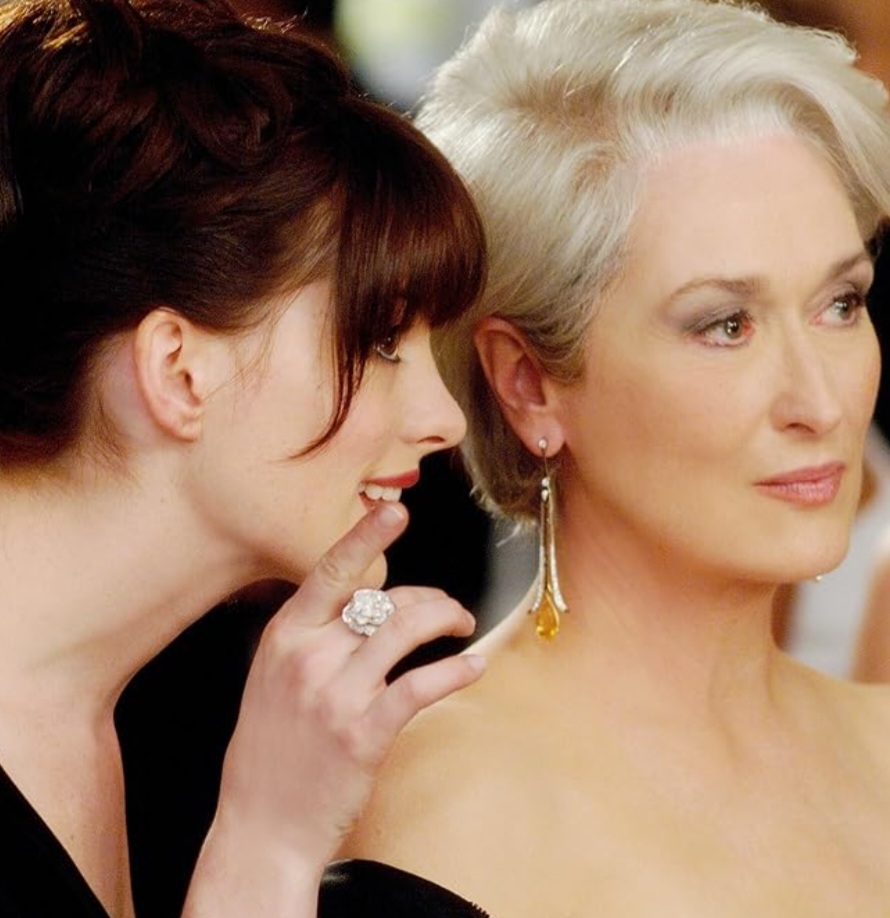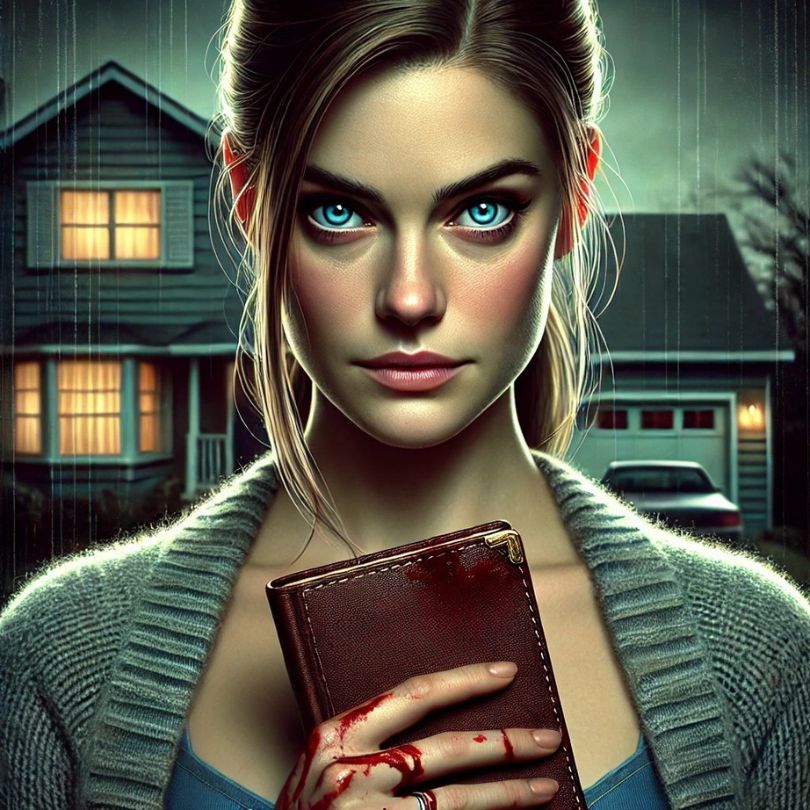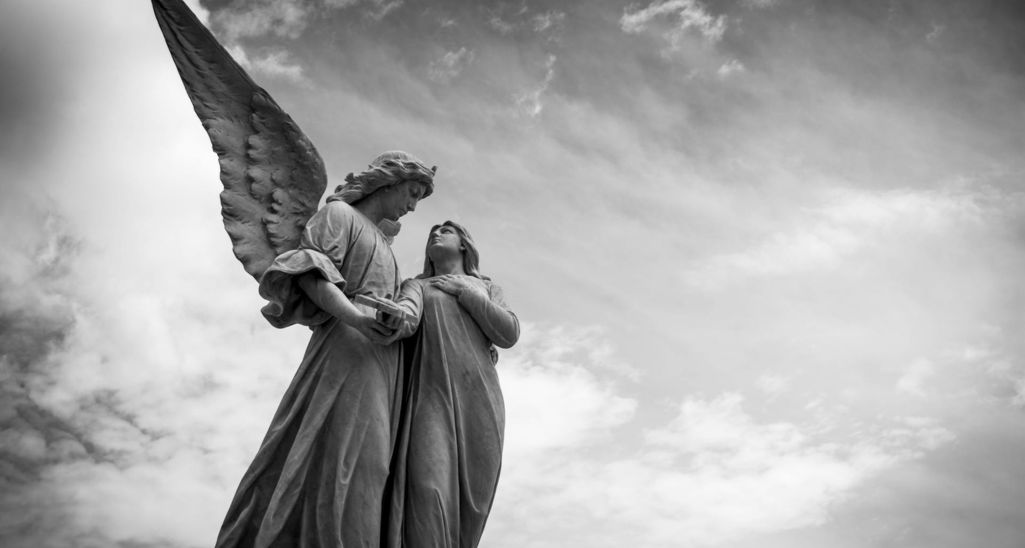Nearly two decades after its release, The Devil Wears Prada continues to captivate audiences with its razor-sharp wit, compelling character arcs, and a super glamorous insight into the cutthroat world of high fashion.
Both the 2003 novel by Lauren Weisberger and its 2006 film adaptation are still so appealing (and sometimes relatable). They offer a tale that transcends the world of high fashion to explore universal themes of ambition, personal growth, and the quest for identity.
As the sequel has just been confirmed and anticipation begins, let’s explore why this movie remains a beloved classic and what fans might expect from a follow-up.
A Glimpse into the Glamorous and Grueling Fashion World
At its core, The Devil Wears Prada tackles universal themes that continue to strike a chord with audiences:
Career ambition vs. personal values
The challenges of navigating workplace dynamics
The price of success and the meaning of sacrifice
Through the eyes of the protagonist, Andrea “Andy” Sachs (Anne Hathaway), we are thrust into the opulent yet hardcore world of Runway magazine, modelled after Vogue.
Her journey from wide-eyed newcomer to savvy professional mirrors many young adults’ experiences in competitive industries.

The internal struggle between career advancement and personal integrity remains as relevant today as it was in 2006.
The Devil Wears Prada reveals the intoxicating allure of the fashion industry.
The film’s breathtaking portrayal of fashion, from the lavish photo shoots to the high-stakes runway shows, provides a visual feast that continues to enchant audiences.
Meryl Streep’s portrayal of Miranda Priestly, the demanding editor-in-chief of Runway magazine, is nothing short of legendary.
Her nuanced performance elevates Miranda beyond a one-dimensional villain, creating a complex character that viewers love to hate – and sometimes grudgingly admire.
Her icy demeanour and withering put-downs, such as “That’s all,” have become part of the pop culture lexicon, illustrating the often brutal nature of climbing the career ladder.
The supporting cast, including Emily Blunt as the acerbic senior assistant Emily and Stanley Tucci as the sharp-tongued but kind-hearted Nigel, round out a stellar ensemble that brings depth and humour to every scene.
Relatable Struggles of Ambition and Sacrifice
Beyond the glamorous façade, The Devil Wears Prada is a story about the personal sacrifices made in the pursuit of professional success.
Andy’s journey from an unfashionable naive, aspiring journalist to a capable assistant reveals the costs of ambition.
Her transformation involves long hours, relentless demands, and a gradual estrangement from her friends and boyfriend.
This narrative strikes a chord with anyone who has grappled with work-life balance, highlighting the universal struggle to maintain one’s identity while striving to succeed.
The Transformative Power of Mentorship
The complex relationship between Andy and Miranda serves as a compelling exploration of mentorship and its transformative potential.
While Miranda’s mentorship is far from nurturing, it is undeniably effective in honing Andy’s skills and resilience.
This dynamic, fraught with tension and mutual respect, reflects the real-world reality where tough mentors can push protégés to reach their full potential, albeit at a personal cost.
The Evolution of Fashion and Feminism
In the nearly twenty years since its release, The Devil Wears Prada has sparked conversations about the evolving intersections of fashion, feminism, and workplace dynamics.
The story challenges the stereotype of fashion as a frivolous pursuit, showcasing it instead as a serious, multi-billion-dollar industry demanding dedication and intellect.

Furthermore, it opens a dialogue about the roles of women in leadership and the different expectations placed upon them.
Miranda Priestly’s character, while often criticised for her harshness, can also be seen as a portrayal of the immense pressure on women to excel and maintain authority in male-dominated fields.
Enduring Lessons for the Modern Professional
The relevance of The Devil Wears Prada endures, offering timeless lessons for today’s professionals.
It underscores the importance of perseverance, adaptability, and the courage to redefine one’s path.
*Spoiler* Andy’s ultimate decision to leave Runway and pursue her true passion is a reminder that personal fulfilment should never be sacrificed at the altar of success.
In a world where the lines between professional and personal lives are increasingly blurred, this message is more relevant than ever.
Fashion as a Character
The film’s stunning costume design, courtesy of Patricia Field (Sex and the City), remains a visual feast.
From Andy’s transformation from frumpy to fabulous to Miranda’s impeccable power suits, the fashion in The Devil Wears Prada is practically a character in itself.

The movie’s ability to capture the essence of the mid-2000s style while remaining visually appealing today speaks to its timeless quality.
The Devil Wears Prada Sequel: What Fans Might Expect
As we look forward to the sequel, there is a palpable excitement about what’s in store.
The original film’s screenwriter, Aline Brosh McKenna, is reportedly in talks to return, promising to bring the same sharp wit and depth to the new instalment.
The sequel is said to be in development at Disney, with the potential return of Meryl Streep and Emily Blunt, hinting at another round of high-stakes fashion drama and office politics.
What will the sequel be about?
The storyline is expected to adapt to the changing landscape of media and fashion, addressing the decline of traditional magazine publishing and the challenges that come with it.
Fans are eager to see how Miranda Priestly will navigate this new world, where the digital revolution has transformed the way we consume fashion and media.
Will she adapt or fight against the tide? And what of Emily, now a high-powered executive?
The dynamics between these two strong characters in a changed industry landscape promise to be as compelling as ever.
Perhaps the storyline will be similar to Lauren Weisberger’s 2013 follow-up to The Devil Wears Prada called Revenge Wears Prada: The Devil Returns.
Set a decade after the first book, Andy and Emily now have their own magazine and Andy is struggling with impending motherhood and a new marriage.
She is still haunted by her time at Runway magazine and when she runs into her nemesis Miranda Priestly, the drama and terror all comes flooding back.
Who will star in the sequel?

“Gird your loins!” It is rumoured the fabulous Meryl Streep will reprise her role as the icy Miranda Priestly alongside fellow actors Anne Hathaway, Emily Blunt and Stanley Tucci.
When will it be released?
The release date hasn’t been confirmed yet.
Some Thoughts On What a Devil Wears Prada sequel Could Look Like:
Evolution of the fashion industry: A sequel could explore how the world of high fashion has changed in the age of social media influencers and fast fashion.
Character growth: We could see how Andy’s career has progressed and whether Miranda has adapted to changing times or doubled down on her exacting standards.
New faces: Fresh talent could be introduced to shake up the dynamics and reflect the diversity of today’s fashion world.
Technological advancements: The sequel might delve into how digital platforms have transformed magazine publishing and fashion journalism.
Sustainability in fashion: Given the increasing focus on ethical and sustainable practices, a sequel could address these important industry issues.

The sequel to The Devil Wears Prada will not be just a continuation of a beloved story; it is a reflection of the evolution of an industry and the enduring nature of its characters.
Nearly 20 years later, the film’s legacy continues to influence fashion, cinema, and the conversation around career and personal fulfilment.
Whether revisiting the novel or the film, audiences are reminded of the enduring complexities of career and personal growth, making it a story that remains as fresh and relevant as ever.
I for one could not be more excited.
If You Like The Devil Wears Prada You Might Enjoy:
For those who enjoyed the blend of fashion, wit, and workplace drama in The Devil Wears Prada, there are several films that echo its spirit.
Morning Glory is a delightful rom-com that delves into the competitive world of national news, with Rachel McAdams leading the charge as an ambitious producer. The film shares the same undercurrents of career obsession and personal sacrifice that appeals to fans of The Devil Wears Prada.
Another film that captures the essence of a high-powered female lead is The Intern, where Robert De Niro’s character, a senior intern, forms an unlikely friendship with Anne Hathaway’s Jules Ostin, the head of an online fashion retailer.
The charm and challenges of the fashion industry are further explored in Coco Before Chanel, which traces the rise of the iconic Coco Chanel.
For a lighter take on fashion and self-discovery, 13 Going on 30 starring Jennifer Garner offers a whimsical and heartwarming story.
Confessions of a Shopaholic starring Isla Fisher is a comedy that tackles consumerism and fashion obsession.
While Clueless provides a satirical look at the life of wealthy teenagers in Beverly Hills, with a strong focus on fashion and social status.
Ready to Wear (Prêt-à-Porter) is a satirical comedy-drama that gives a behind-the-scenes look at the Paris fashion scene.
Cruella, set in the punk rock revolution of the 1970s, follows a young fashion designer’s transformation into the notorious villain.
Working Girl is a classic tale of ambition and romance in the corporate world, reminiscent of the power dynamics in The Devil Wears Prada.
These films, much like The Devil Wears Prada, offer a mix of humour, drama, and a peek into the glamorous yet demanding world of fashion and media.
They celebrate the tenacity of their protagonists and provide commentary on the industries they navigate, making them perfect for fans looking for similar cinematic experiences.





Leave a Reply